How Palm Oil Changes Our Life ?
Introduction:
Palm oil, derived from the fruit of the oil palm tree, has become a ubiquitous and integral part of our daily lives. Its impact is vast and extends across various sectors, influencing everything from the products we use to the global economy. Widely recognized for its versatility and economic importance, palm oil has, however, sparked debates due to its environmental and social implications. This introductory exploration delves into the ways in which palm oil has changed our lives, examining its role in economic development, consumer goods, and the complex environmental and social landscapes it traverses. As we navigate this narrative, we will uncover both the positive contributions and the challenges associated with palm oil, shedding light on its profound influence on the modern world.

Largest producers of palm oil:
- Indonesia:
- Indonesia is the largest producer of palm oil globally. The country has extensive palm oil plantations, and the industry is a significant contributor to Indonesia’s economy.
- Malaysia:
- Malaysia is the second-largest producer of palm oil. Like Indonesia, Malaysia has extensive palm oil plantations, and the industry plays a crucial role in the country’s economy.
- Thailand:
- Thailand is another significant producer of palm oil, although its production is comparatively smaller than Indonesia and Malaysia.
- Nigeria:
- Nigeria is the largest producer of palm oil in Africa. The country has a long history of palm oil production, and it is an important crop for both domestic consumption and export.
- Colombia:
- In South America, Colombia is a notable producer of palm oil. The industry has grown in recent years, and Colombia is among the top palm oil producers in the region.
- Papua New Guinea:
- Papua New Guinea is a significant producer of palm oil in the Pacific region. The industry has expanded, and palm oil is an important agricultural commodity for the country.
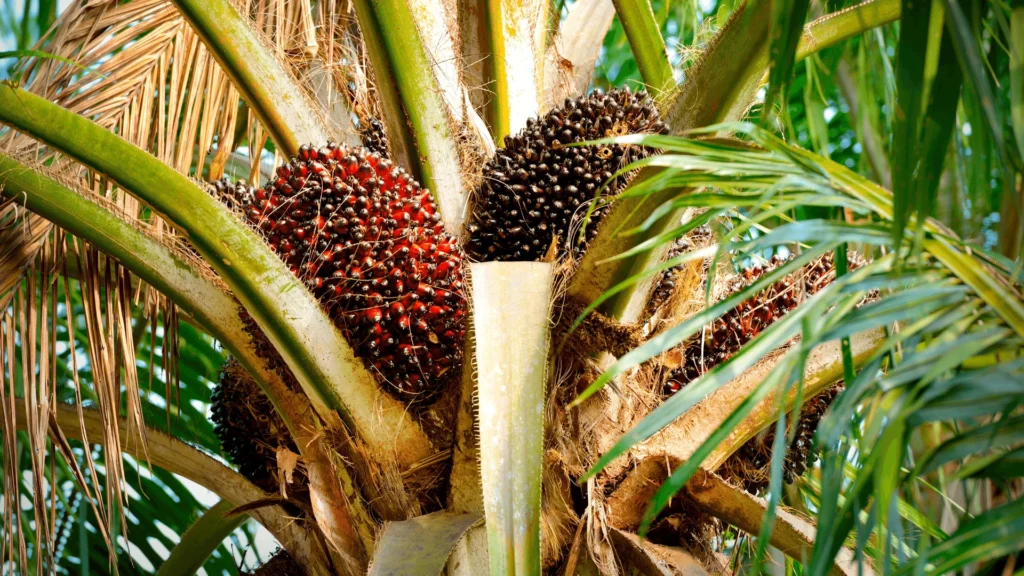
Palm oil production:
Palm oil production involves several stages, from cultivation to processing, and it plays a crucial role in the economies of certain tropical countries.
Cultivation:
Oil palm trees are grown in large plantations, mainly in tropical regions like Southeast Asia, Africa, and South America.
Harvesting:
Mature fruit bunches are harvested from the palm trees.
Processing:
The fruit bunches are transported to processing mills.
Sterilization and threshing separate the fruits from the bunch.
Oil is extracted from the fruit pulp, often using mechanical pressing or solvents.
The crude palm oil undergoes clarification to remove impurities.
Refining:
Crude palm oil is refined to improve quality, remove impurities, and obtain different fractions like palm olein and palm stearin.
End Products:
The refined palm oil is used in various industries, including food, cosmetics, and biofuels.
By-products like palm kernel oil and palm kernel meal are also derived from the process.
Sustainability Initiatives:
In response to environmental and social concerns associated with palm oil production, there have been efforts to promote sustainable practices. Certification programs, such as the Roundtable on Sustainable Palm Oil (RSPO), aim to ensure that palm oil is produced in an environmentally and socially responsible manner.
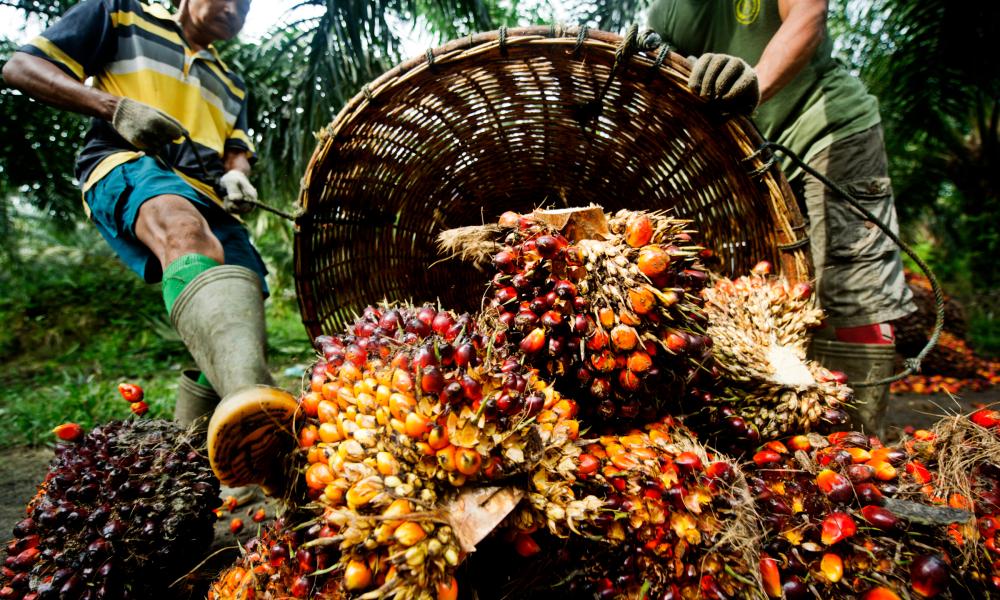
Impact of palm oil on human health:
The impact of palm oil on human health can be both positive and negative, depending on various factors such as the type of palm oil consumed, processing methods, and overall dietary patterns.
Positive Aspects:
Versatility in Cooking:
Palm oil has a high smoke point, making it suitable for high-heat cooking methods such as frying and deep frying. Its stability at high temperatures can help maintain the nutritional quality of foods.
Vitamin A Content:
Red palm oil, in its unrefined state, contains beta-carotene, which the body can convert into vitamin A. Vitamin A is crucial for maintaining healthy skin, vision, and immune function.
Energy Density:
Like all cooking oils, palm oil is energy-dense and can contribute to the overall caloric intake, providing a quick source of energy.
Negative Aspects:
Saturated Fat Content:
Palm oil is high in saturated fats, which, when consumed in excess, can contribute to elevated levels of LDL (low-density lipoprotein) cholesterol. High LDL cholesterol is a risk factor for cardiovascular diseases.
Processed Foods:
Palm oil is commonly used in processed foods, including baked goods, snacks, and fried products. Diets high in processed foods may contribute to excessive calorie intake and poor nutritional balance.
Refining Process:
The refining process of palm oil may involve the use of chemicals and high temperatures, which can lead to a reduction in the nutritional quality of the oil.
Potential Health Concerns:
Some studies have suggested potential links between the consumption of palm oil and health issues such as obesity, insulin resistance, and inflammation. However, more research is needed to establish clear causal relationships.
Environmental Impact and Health:
The environmental impact of unsustainable palm oil production, including deforestation and habitat destruction, can indirectly affect human health. Loss of biodiversity, changes in ecosystems, and air and water pollution can have consequences for human well-being.
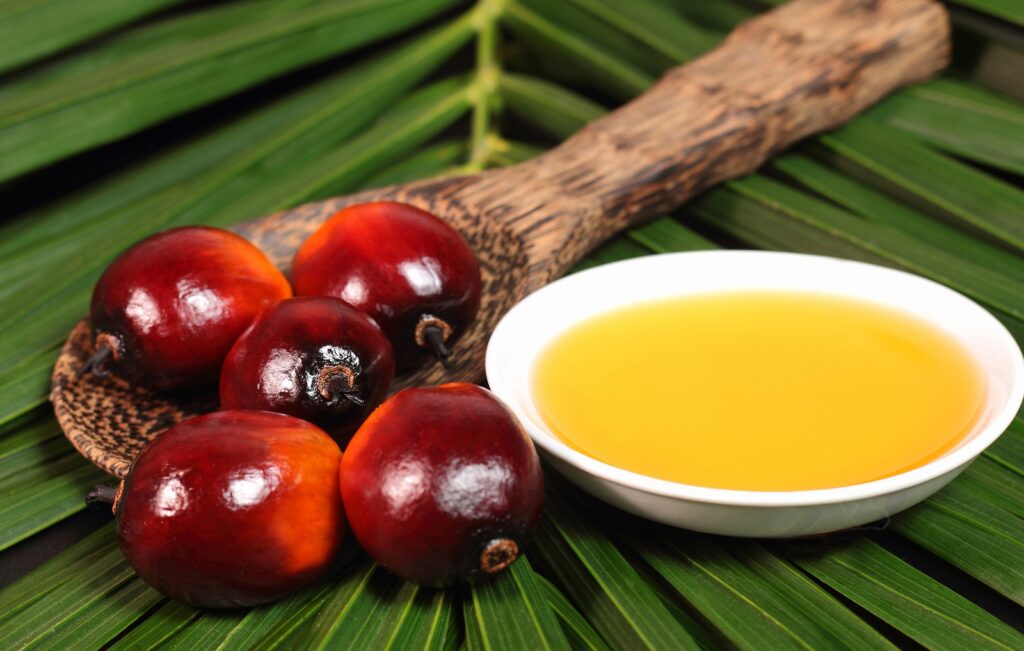
How palm oil impact on wildlife and Nature ?
Palm oil production has a significant impact on nature, including deforestation, habitat destruction, and loss of biodiversity. Large-scale plantations often replace diverse ecosystems, leading to environmental degradation, soil erosion, and disruptions to water cycles. Unsustainable practices contribute to climate change through the release of stored carbon in cleared forests. Additionally, the use of pesticides and fertilizers in palm oil cultivation can lead to water pollution, affecting aquatic ecosystems. Balancing the economic benefits of palm oil with environmental conservation is crucial for sustainable and responsible production.

Biodiversity Decline:
Deforestation for palm oil cultivation results in the loss of diverse ecosystems, leading to a decline in biodiversity. Many species, including orangutans, tigers, and rhinoceros, lose their natural habitats.
Habitat Fragmentation:
The expansion of palm oil plantations creates fragmented landscapes, isolating wildlife populations and making it challenging for species to migrate, find mates, and maintain genetic diversity.
Endangered Species Impact:
Critically endangered species, such as the Sumatran orangutan and the Bornean pygmy elephant, are particularly vulnerable to the habitat destruction caused by palm oil production.


Displacement and Conflicts:
Wildlife displacement and increased human-wildlife conflicts occur as animals are forced to move into populated areas in search of food and shelter, leading to negative interactions with humans.
Threat to Indigenous Flora and Fauna:
Unique and endemic plant and animal species in palm oil-producing regions are threatened, as their ecosystems are replaced by monoculture plantations.
Products that contain palm oil:
Palm oil is a common ingredient in a wide range of products due to its versatility. Some products that often contain palm oil include:
- Food Products:
- Baked goods (biscuits, pastries)
- Margarine and spreads
- Snack foods (chips, crackers)
- Instant noodles
- Chocolate and confectionery
- Household Items:
- Soap and detergents
- Shampoo and cosmetics
- Candles
- Cleaning products
- Personal Care Products:
- Skincare and beauty products
- Shaving cream
- Lipstick and cosmetics
- Biofuels:
- Biodiesel and biofuels for transportation
- Animal Feed:
- Some animal feed formulations may contain palm oil derivatives.

Palm oil has various names on ingredient lists of products:
Palm oil and its derivatives can appear under various names on ingredient lists of products. It’s important for consumers to be aware of these alternative names when checking for the presence of palm oil.
Palm Oil:
Sometimes products will explicitly list “palm oil” in the ingredient list.
Palm Kernel Oil:
This is oil extracted from the kernel or seed of the oil palm fruit.
Palm Fruit Oil:
Refers to the oil extracted from the fruit of the oil palm.
Palmate:
This term may be used in some ingredient lists to indicate the presence of palm oil.
Palmitate:
Palmitate is the ester of palmitic acid, which can be derived from palm oil.
Sodium Laureth Sulfate (SLES):
Some formulations of SLES may contain palm oil derivatives.
Sodium Lauryl Sulfate (SLS):
Similar to SLES, SLS may also contain palm oil derivatives in some formulations.
Palmolein:
This is a liquid fraction of palm oil often used in cooking and food products.
Glyceryl Stearate:
A compound that may be derived from palm oil and used in various cosmetic and personal care products.
Stearic Acid:
A fatty acid that can be derived from palm oil and is used in a variety of products, including cosmetics and food items.
Cetyl Palmitate:
An ester of cetyl alcohol and palmitic acid, which can be derived from palm oil.
Emulsifiers (E471):
E471 is a food additive that may include mono- and diglycerides, which can be derived from palm oil.
Mono- and Diglycerides:
Used as emulsifiers in food products, these can be derived from palm oil.
Palmityl Alcohol:
An alcohol derived from palm oil used in the cosmetic and personal care industry.
Palmoyl Sarcosine:
A surfactant and foaming agent used in some personal care products.
Alternatives to palm oil:
Sunflower Oil:
Light in flavor, high smoke point, and versatile for cooking.
Canola Oil:
Low in saturated fat, neutral taste, and suitable for various cooking methods.
Olive Oil:
Healthier option with a distinct flavor, great for salads and low-heat cooking.
Coconut Oil:
Provides a unique flavor, suitable for baking, cooking, and even skincare.
Soybean Oil:
Neutral taste, high smoke point, and commonly used in cooking.
Avocado Oil:
High in monounsaturated fats, suitable for high-heat cooking, and has a mild flavor.
Grapeseed Oil:
Light flavor, high smoke point, and often used in salad dressings and sautéing.
Peanut Oil:
Imparts a mild peanut flavor, suitable for frying and stir-frying.
Flaxseed Oil:
Rich in omega-3 fatty acids, best used in salad dressings and not for cooking.
Rice Bran Oil:
Neutral taste, high smoke point, and commonly used in Asian cooking.
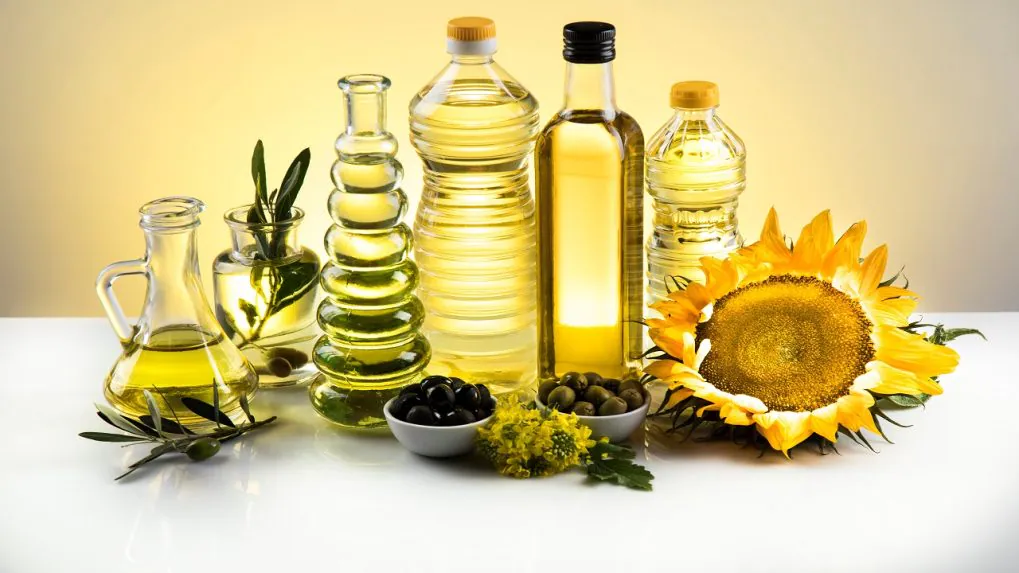
Possitive and negative effect of palm oil production:
Positive Effects of Palm Oil Production:
Economic Development:
Palm oil production is a significant contributor to the economies of countries where it is cultivated, providing employment and income for many people.
High Yield:
Oil palm is a highly productive crop, yielding a larger amount of oil per hectare compared to many other oilseeds, making it an efficient source of vegetable oil.
Versatility:
Palm oil is a versatile product used in a wide range of industries, including food processing, cosmetics, and biofuels, contributing to global trade and commerce.
Poverty Alleviation:
The palm oil industry has played a role in poverty reduction by providing jobs and income to communities in palm oil-producing regions.
Infrastructure Development:
The establishment of palm oil plantations often leads to the development of infrastructure, such as roads and processing facilities, benefiting local communities.
Biodiesel Production:
Palm oil can be used as a feedstock for biodiesel, contributing to renewable energy sources and reducing dependence on fossil fuels.
Negative Effects of Palm Oil Production:
Deforestation and Habitat Loss:
One of the most significant environmental concerns is the conversion of forests, including tropical rainforests, into palm oil plantations, leading to habitat loss and biodiversity decline.
Climate Change:
Deforestation for palm oil production contributes to greenhouse gas emissions and climate change. Forests act as carbon sinks, and their removal releases stored carbon into the atmosphere.
Land Use Conflict:
The expansion of palm oil plantations can lead to conflicts over land use, particularly when it involves the displacement of indigenous communities or encroachment on traditional lands.
Water Pollution:
The use of fertilizers and pesticides in palm oil plantations can lead to water pollution, affecting local water quality and aquatic ecosystems.
Social Issues:
The palm oil industry has been associated with social issues such as poor labor conditions, exploitation of workers, and violations of land rights, particularly in some non-certified plantations.
Loss of Peatlands:
Palm oil plantations are sometimes established on peatlands, leading to the drainage of these areas. This can result in soil degradation, increased fire risk, and the release of stored carbon.
Impact on Indigenous Communities:
Indigenous communities may face displacement, loss of livelihoods, and cultural disruption when their lands are converted into palm oil plantations.
Consumer Health Concerns:
Some processed foods containing palm oil have been criticized for their high levels of saturated fats, which can contribute to health issues such as heart disease.
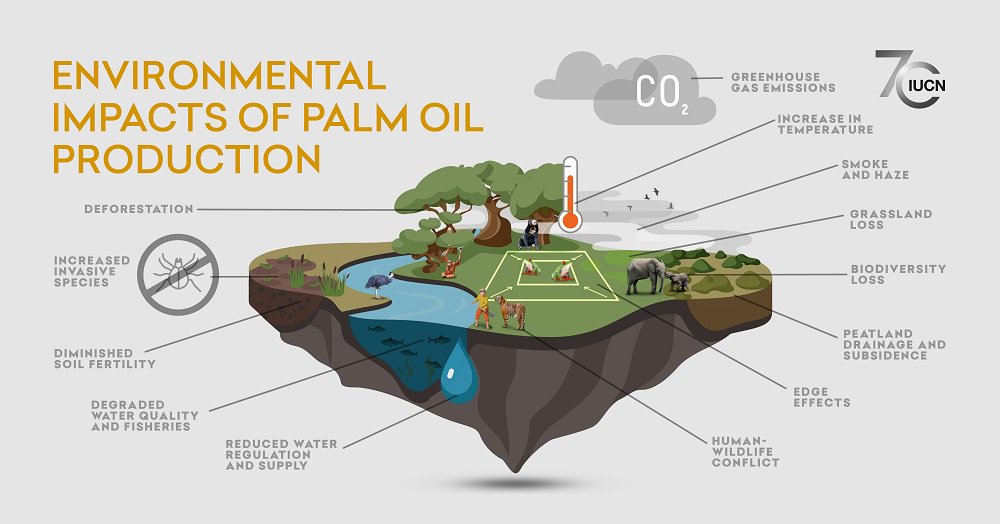
Ideas for reducing negative impact for palm oil production:
Sustainable Practices: Encourage and adopt sustainable palm oil production practices, such as agroforestry, organic farming, and integrated pest management.
Certification Programs: Support and promote the use of certified sustainable palm oil, such as products certified by the Roundtable on Sustainable Palm Oil (RSPO).
Deforestation-Free Sourcing: Choose products and companies committed to sourcing palm oil without contributing to deforestation, habitat loss, or peatland degradation.
Consumer Awareness: Raise awareness among consumers about the environmental and social issues related to palm oil production, encouraging informed purchasing decisions.
Alternatives and Blends: Explore and use alternative oils or oil blends in cooking and food products to reduce dependency on palm oil.
Corporate Responsibility: Encourage companies to adopt responsible sourcing policies, traceability measures, and support transparency in their supply chains.
Government Regulations: Advocate for and support government regulations that promote sustainable palm oil production and responsible land use.
Community Engagement: Ensure the involvement of local communities in decision-making processes related to palm oil plantations to address social concerns and protect land rights.
Research and Innovation: Invest in research and innovation for sustainable palm oil production methods, including yield improvement and waste reduction.
International Collaboration: Support international collaborations and partnerships aimed at addressing the global challenges associated with palm oil production and promoting sustainable practices.
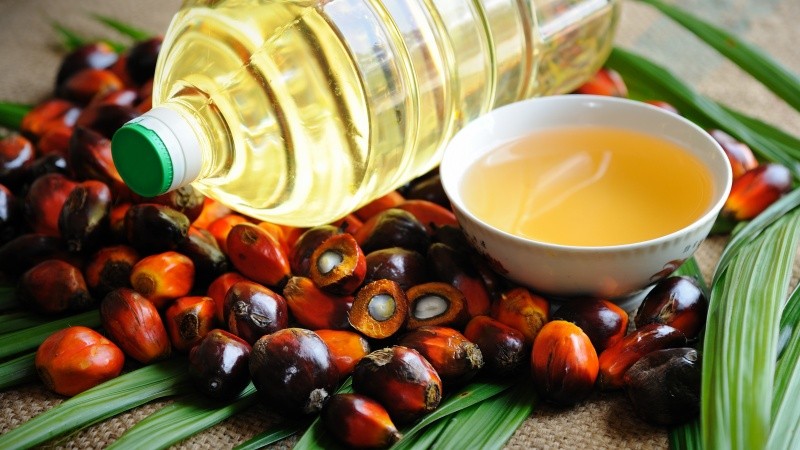
One thought on “How Palm Oil Changes Our Life ?”
Wow, fantastic blog format! How lengthy have you been running a blog for?
you made blogging look easy. The overall glance of your site is fantastic, let alone
the content material! You can see similar here najlepszy sklep